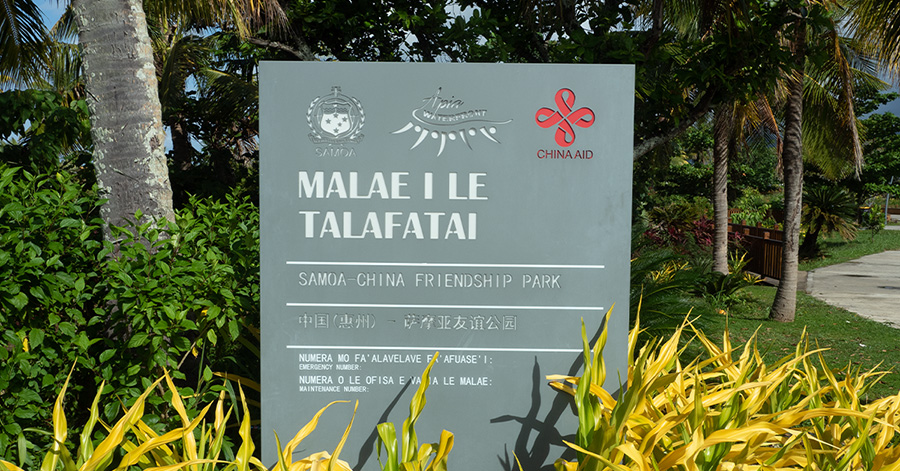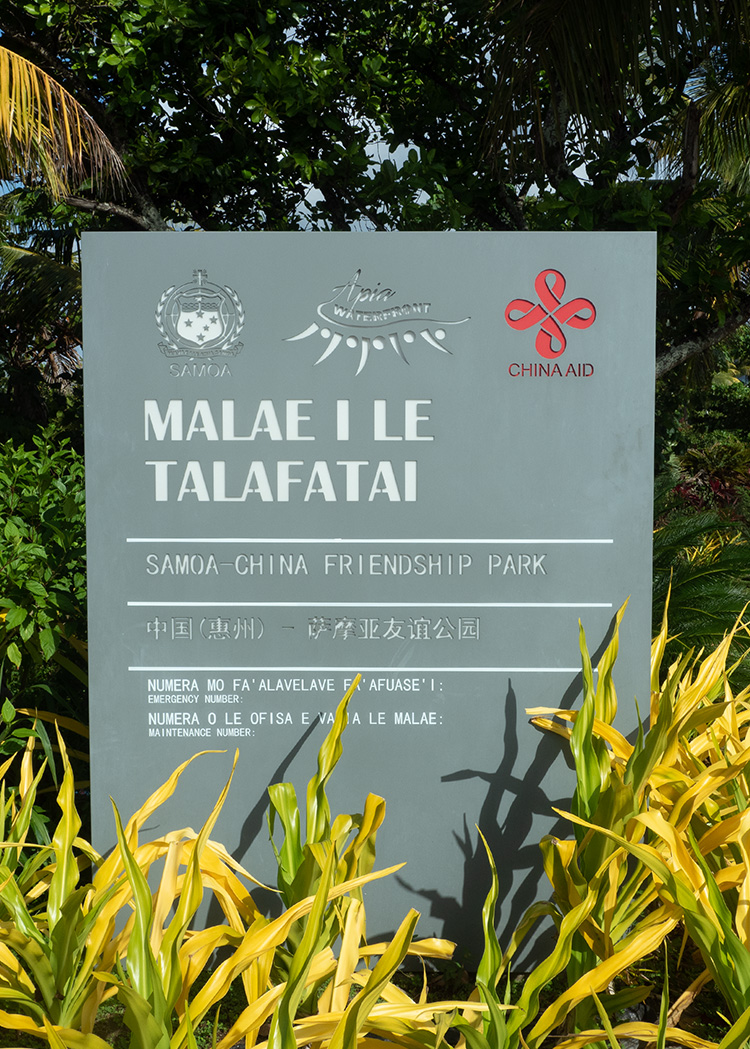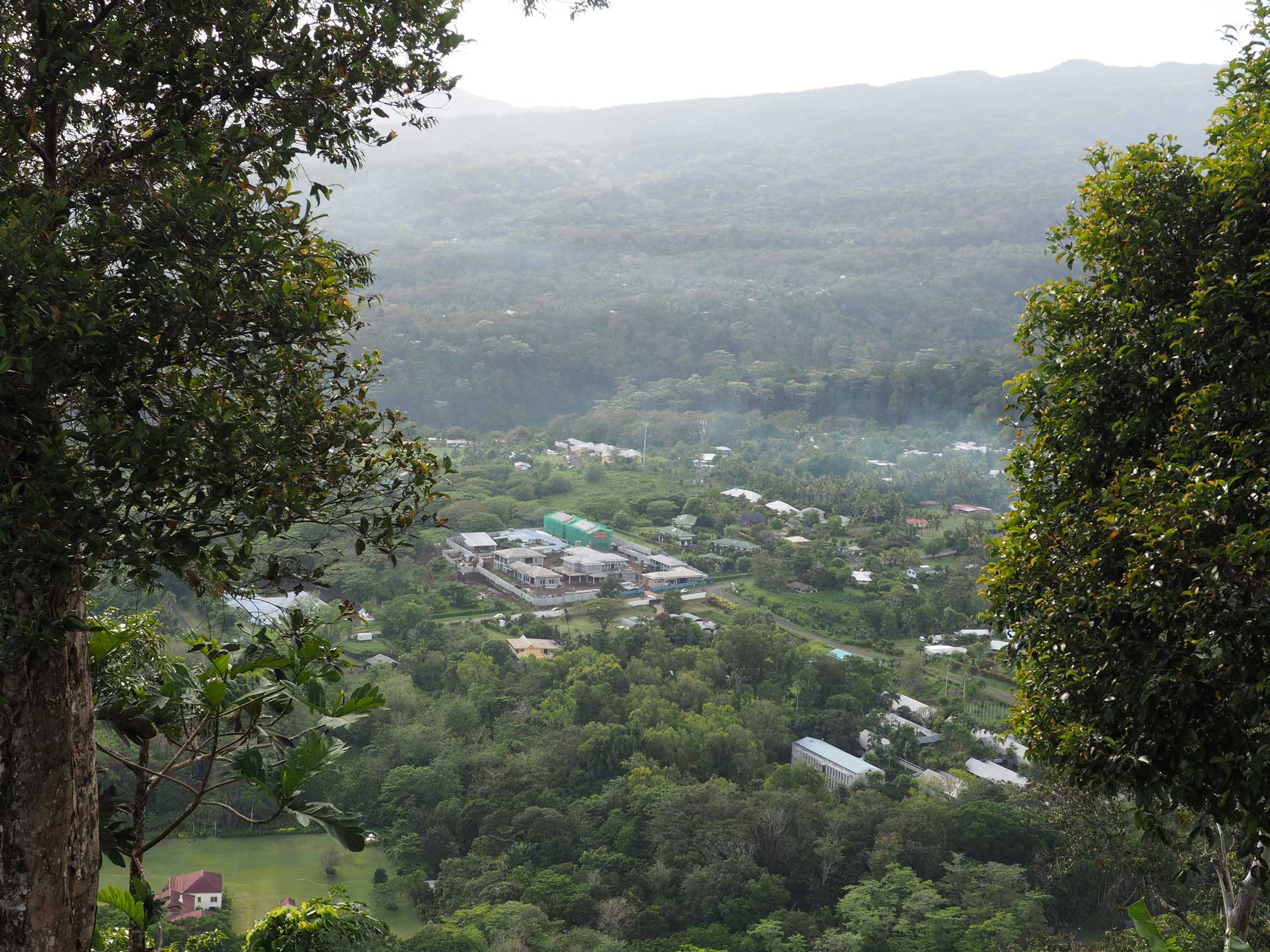

Talofa and Ni Hao
The escalation of both Chinese investment and a potential military presence in the South Pacific has China watchers concerned. In Samoa, there are mixed feelings about both Sino influence and the island nation’s growing indebtedness to the superpower.
Story and photographs by Ollie Neas
In December 1894, mourners carried the body of Robert Louis Stevenson up the steep, jungled slopes of Mount Vaea to his final resting place, overlooking Apia.
During his life, the Scottish novelist had become an international celebrity for his tales of romantic adventure, such as Treasure Island and Kidnapped. But after settling in Samoa in 1889, Stevenson experienced a political awakening.
Samoa was entangled in colonial rivalry, as the United Kingdom, United States and Germany wrestled to seize control of the strategically important archipelago in the South Pacific. Gunboats were a common sight off the coast of Apia, sometimes firing at villages on shore. In 1889, open war was only avoided when a cyclone wrecked the US and German warships anchored in harbour.
As Stevenson learnt the Samoan language, exchanging legends with local chiefs, he began to see parallels between the position of the Samoans and his fellow Scots. Both were dominated by foreign powers, their rich cultures suppressed. No longer content to tell tales of exotic adventure, Stevenson became an activist and agitator, penning letters to European papers about Samoa’s plight.
But it was of little use. Five years after Stevenson’s death, at a meeting half a world away in Washington, the imperial powers agreed to divide Samoa between them. The US took Tutuila and others islands in the east, while Germany took the larger islands of Upolu and Savai‘i in the West. In exchange, Germany recognised Britain’s interests in Tonga and parts of Africa. The Samoan people were not consulted.
More than 120 years on, the grave of Robert Louis Stevenson offers a glimpse of a new great power contest gripping the Pacific.
From the top of Mount Vaea, the US diplomatic compound can be seen through the trees below, surrounded by a security fence. Directly across the road, with a view over the fence, is a large construction site for a new embassy complex for Samoa’s largest creditor: the People’s Republic of China. On the other side of the construction site sits the Australian defence compound, which until recently looked out over the ocean. Now, a multi-storey complex, adorned with a banner in Chinese characters declaring “always stay with the Party”, blocks the view.
Since World War II, the US and its allies have enjoyed a strong influence in the Pacific. But that order is under threat as China’s power and influence in the region grows, provoking anxiety in the halls of power in Washington, Canberra and Wellington.
Chinese-built infrastructure — from roads to bridges, parliament buildings to stadiums — is now ubiquitous across the Pacific, the product of investment that has seen China become the second largest aid donor to the region behind Australia, winning favour from Honiara to Nuku’alofa. Since 2000, the value of Chinese exports to the region has increased 12-fold. Three Pacific countries — Tonga, Samoa and Vanuatu —”are among the most heavily indebted to China of countries anywhere in the world.
Diplomatic engagement is intensifying. Since 2014, there has been an unprecedented 32 face-to-face meetings between Pacific leaders and Chinese President Xi Jinping. All but four Pacific states have severed relations with Taiwan in favour of Beijing. China is also pitching itself as a security provider to Pacific states, as Chinese naval vessels become an increasingly common sight in Pacific waters.
As China’s presence has grown, so too has concern in Western capitals, where China’s rise is often described in sinister terms — threatening peace and stability, entrenching corruption, entrapping small island nations in debt.
That concern reached fever pitch last March, when news broke of a security agreement between the Solomon Islands and China, which appeared to allow for the deployment of Chinese security forces to the islands at the request of the Solomons government. Although defended by Solomons officials as a response to domestic social unrest,”Western observers were quick to see the agreement as opening the door to a broader Chinese military presence in the South Pacific —”and potentially to a Chinese naval base near Australia’s border.
Australian commentator David Llewellyn-Smith, the former owner of foreign affairs journal The Diplomat, called for Canberra to prepare to “invade” the Solomons and “topple its government”, while former prime minister and China expert Kevin Rudd called the development Australia’s worst security policy failure since World War II. In New Zealand, former foreign affairs minister Winston Peters lumped Jacinda Ardern’s government with the blame, while Ardern herself called the development “gravely concerning”. What has followed has been a year of diplomatic jousting unprecedented in the region in recent times.
But in Apia — as in other Pacific capitals — the response to these developments has not been so simple. Over 120 years after that meeting in Washington, Samoa remains a divided country. While what was Western Samoa won its independence 60 years ago, the islands to the east remain a territory of the US, a nation whose military bases still dot the Pacific. In these waters, history remains close to the surface, guiding the way between treacherous currents.

A tangible symbol of China’s growing interest in Samoa and the Pacific — its new embassy complex as seen from Mount Vaea. It dwarfs the nearby US and Australian compounds.
At party headquarters, the ousted prime minister holds court in his office, the curtains drawn, a minute’s drive from a parliament that he is barred from entering.
For 22 years, Tuila‘epa Sa‘ilele Malielegaoi served as Samoa’s prime minister — the longest tenure in Samoa’s history. But after a nail-biting election, an ensuing constitutional crisis, and a series of contested court rulings, Tuila‘epa now finds himself out of power and suspended from Parliament for contempt of court. Over a year on from the election, he remains defiant. “Oh we are fighting. This government has proceeded from one unconstitutional, illegal decision to another and another and another.”
While Tuila‘epa remains an influential figure, railing against his opponents through a weekly talk show on the nation’s main TV channel, there is little denying the wave of discontent that brought about the end of his government and the most dramatic shift in Samoan politics in 40 years. That discontent was of course multifaceted — but one factor was controversy over a proposed port development at Vaiusu Bay near Apia, to be paid for with a $139 million loan from China. To Tuila‘epa, the proposal was a prudent step to boost port capacity. But to the then Opposition, it was a step too far, raising questions about Samoa’s deepening ties to China under a prime minister who had come to be regarded by some as a close China ally.
“We still owe China $400 million in debts from the past. We do not have enough coconuts to repay the Chinese back for all these loans.”
The fruits of those ties are everywhere in Samoa. The international airport terminal, a multi-facility sports complex, government buildings, the hospital, schools, a cultural centre — all built by China. The price: a steady rise in debt, which has seen China become Samoa’s single largest creditor, accounting for around 40 per cent of its external debt. As at 2019, Samoa ranked sixth globally among countries most indebted to China. The proposed port development at Vaiusu Bay would have increased debt exposure to China by 70 per cent per cent on one estimate.
